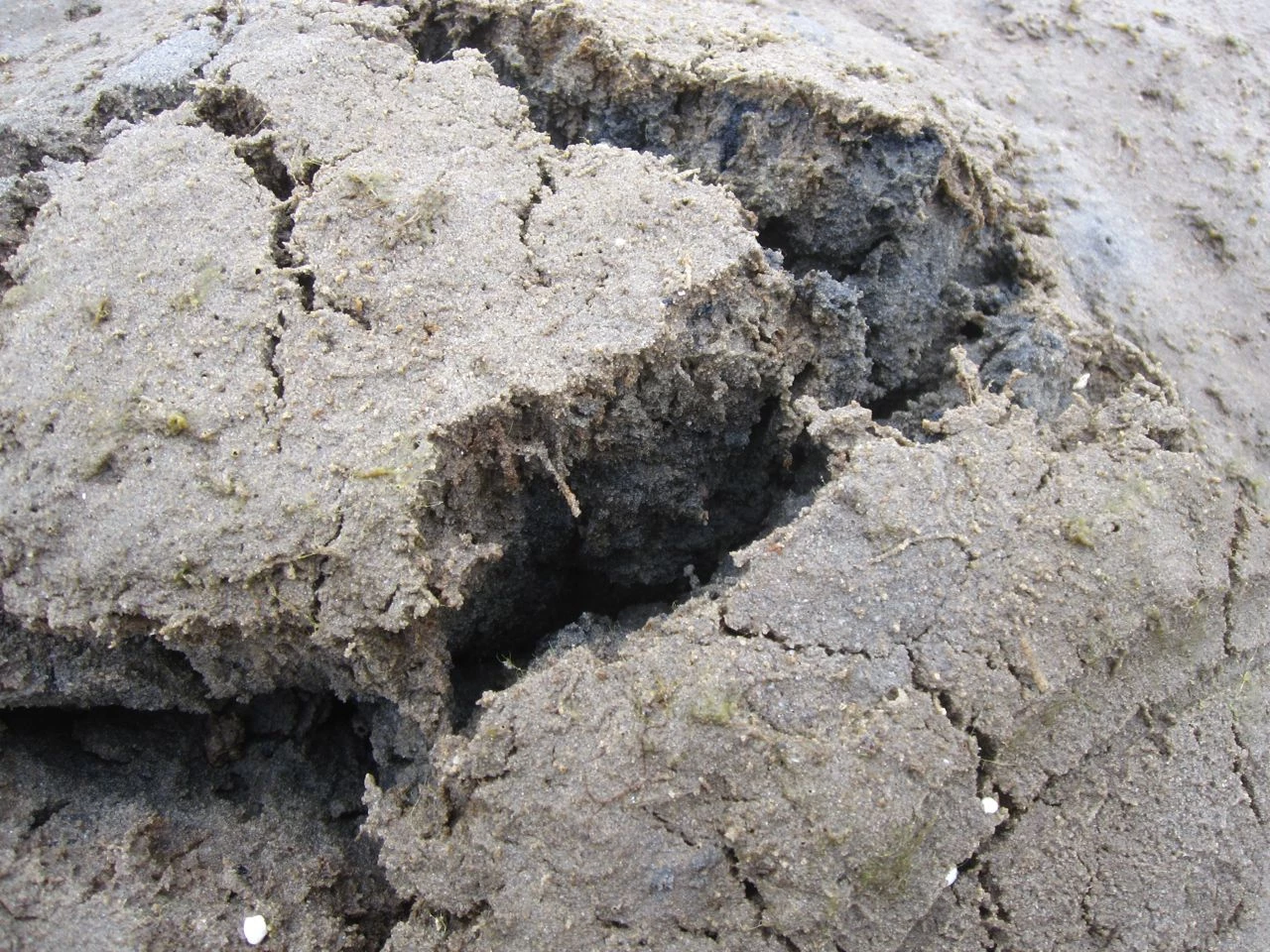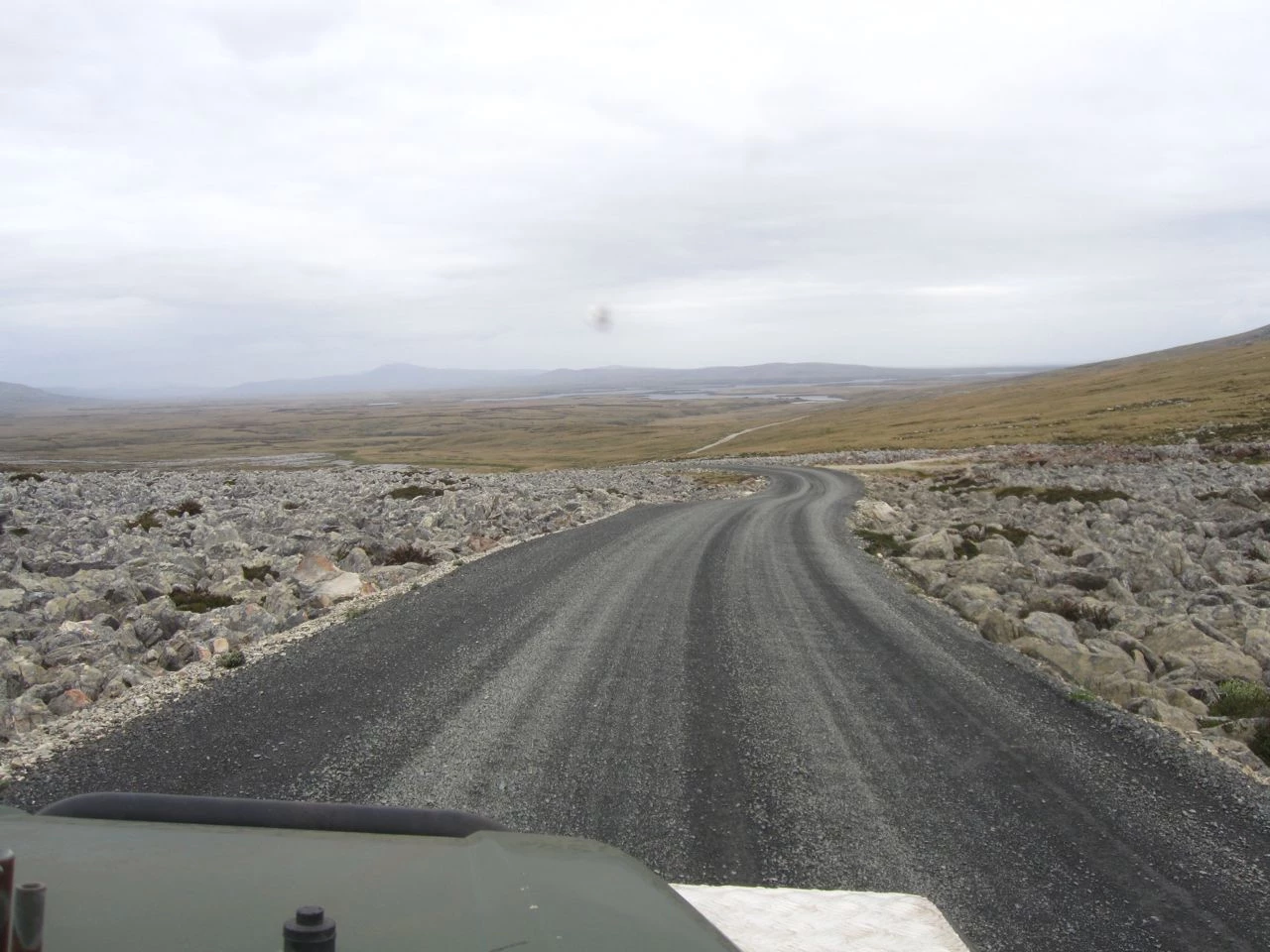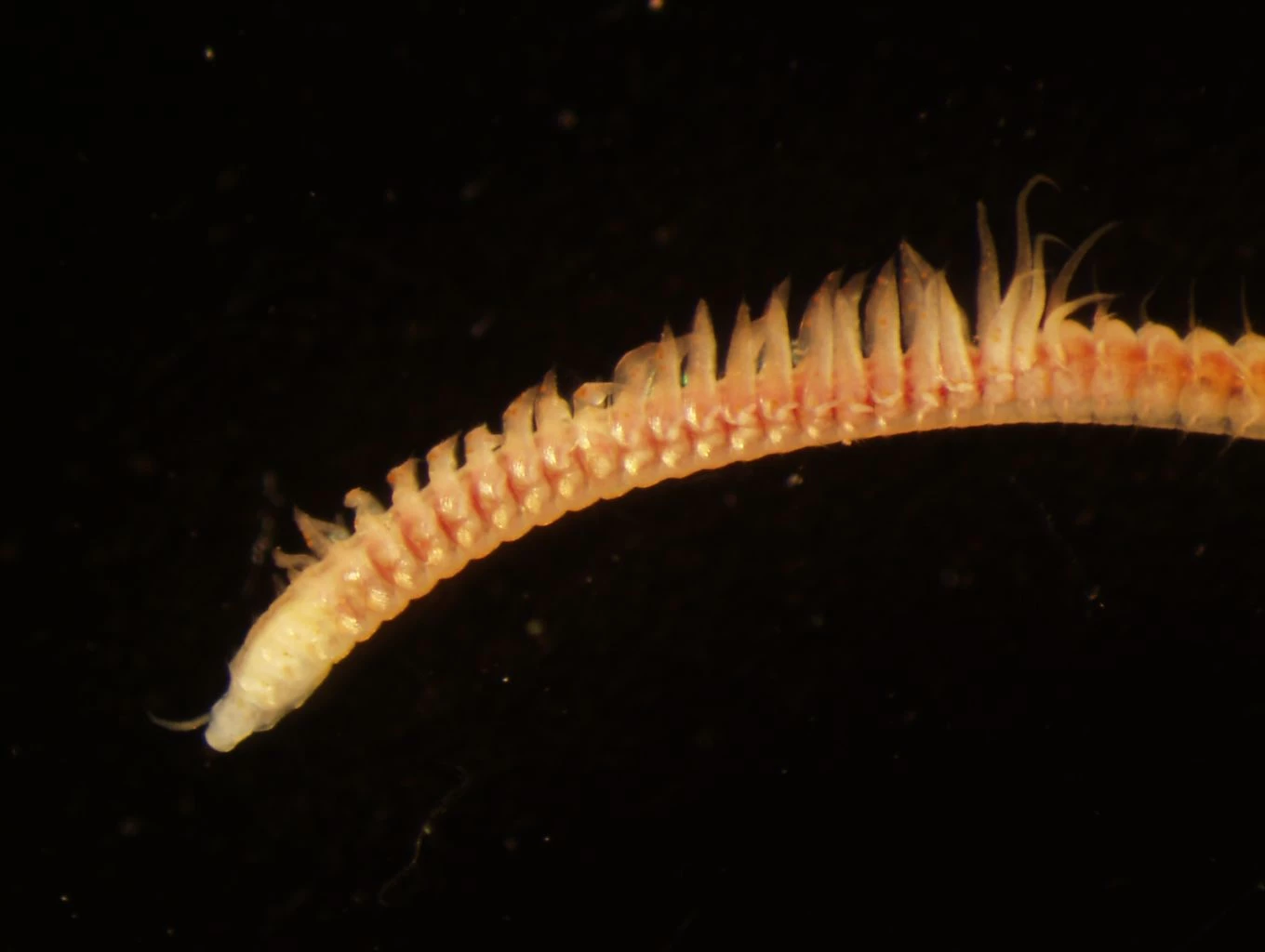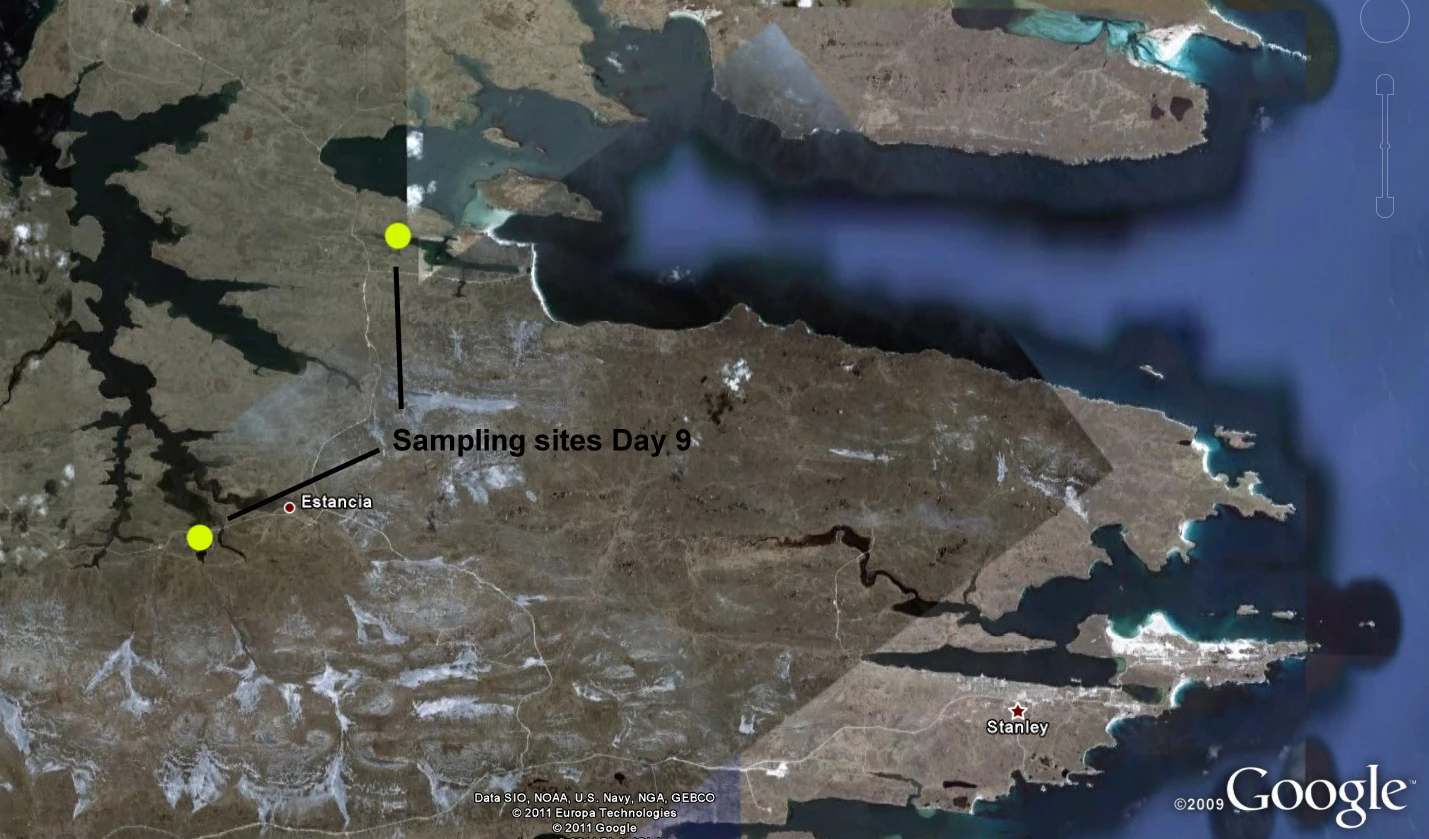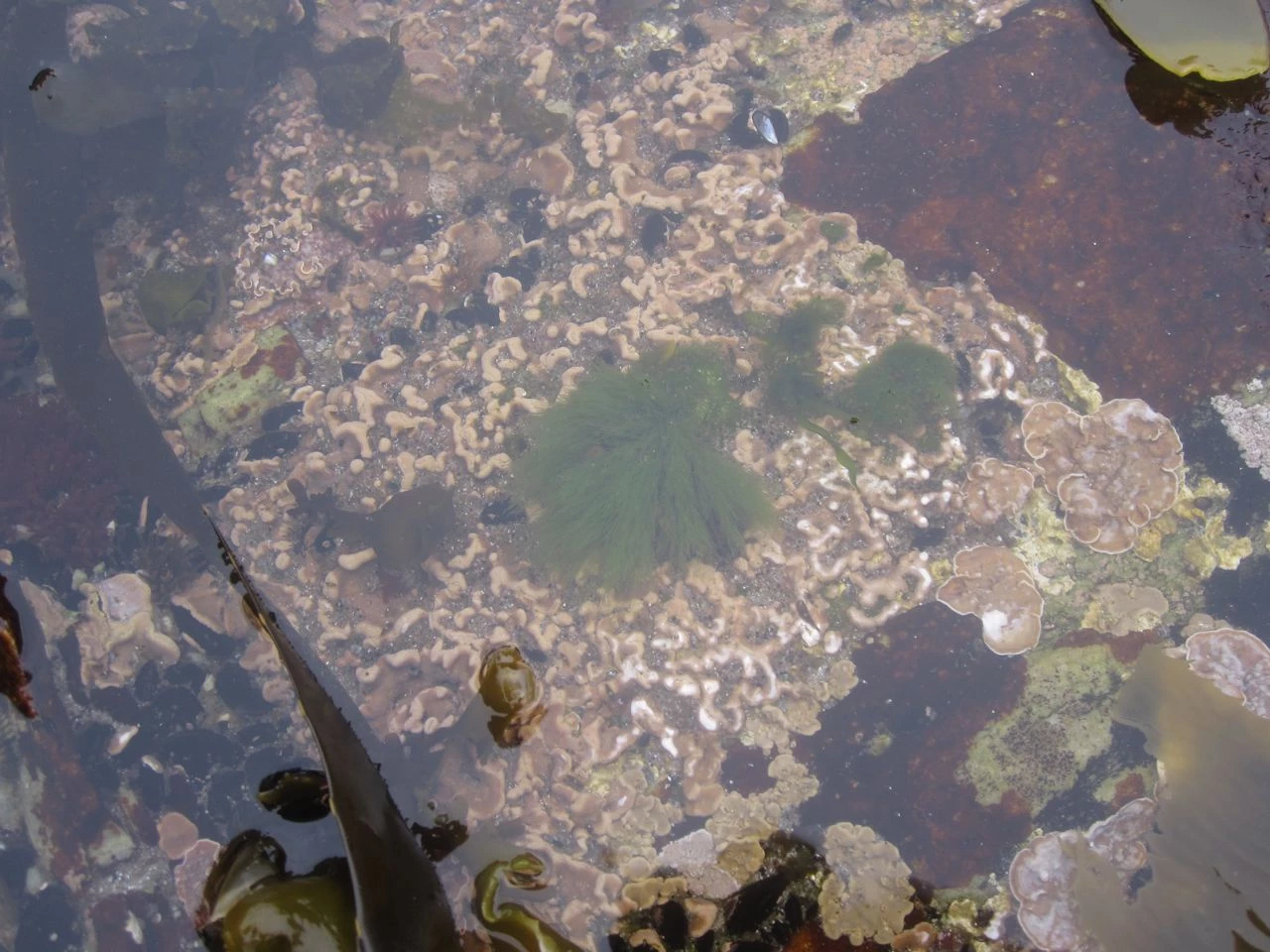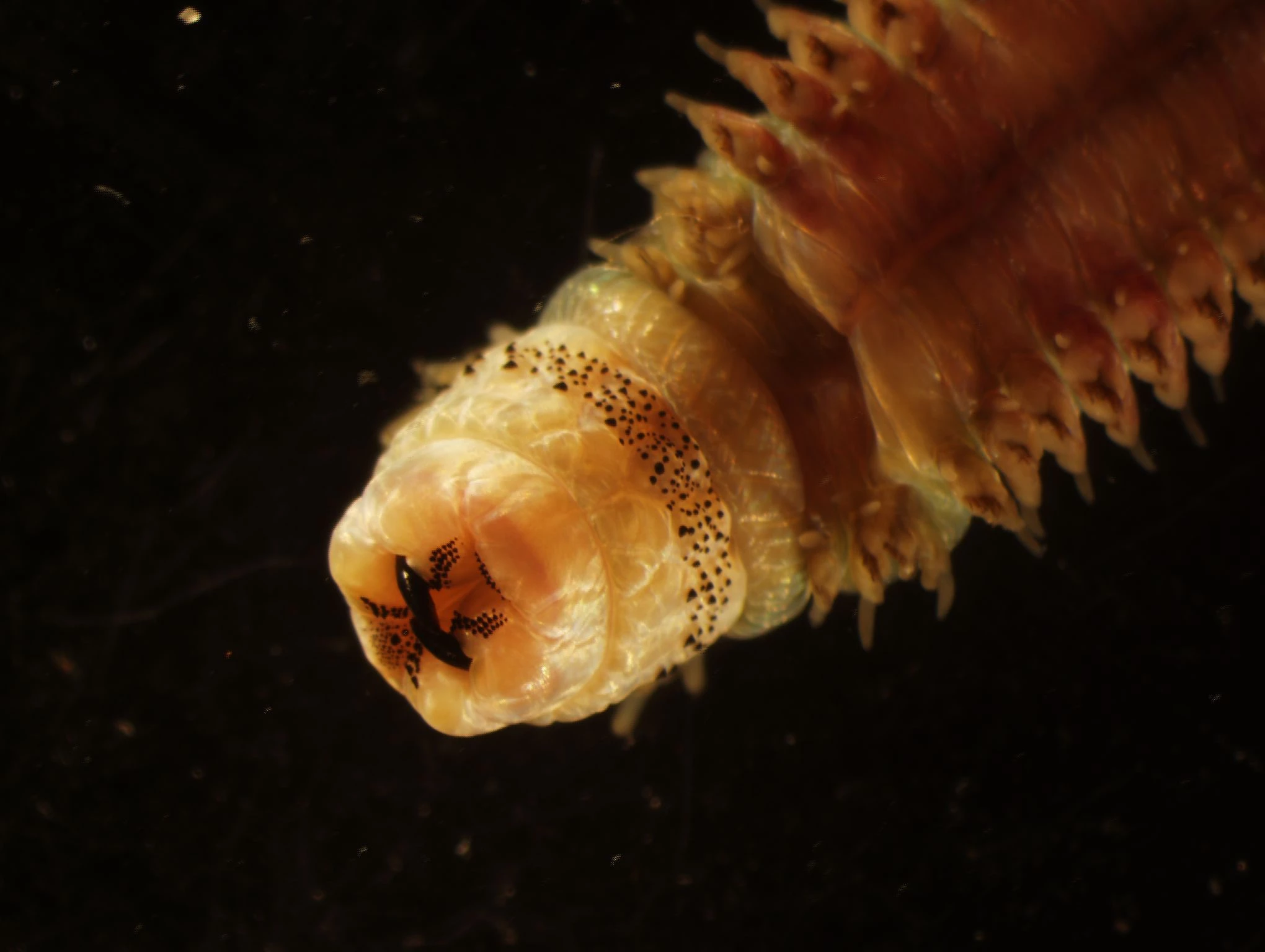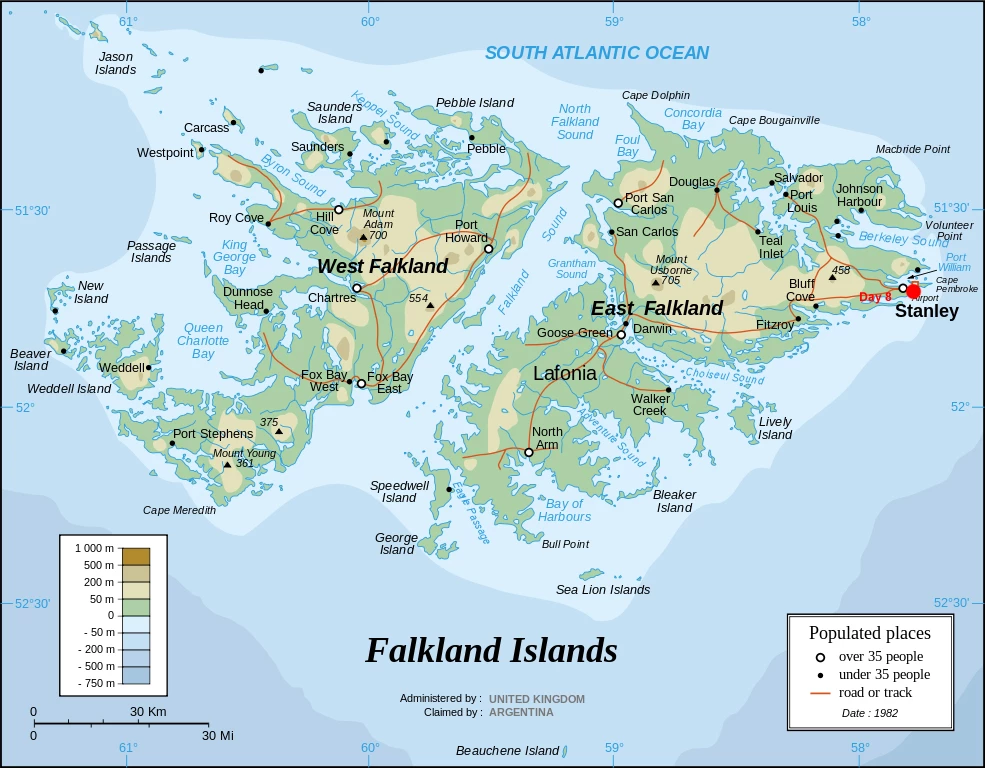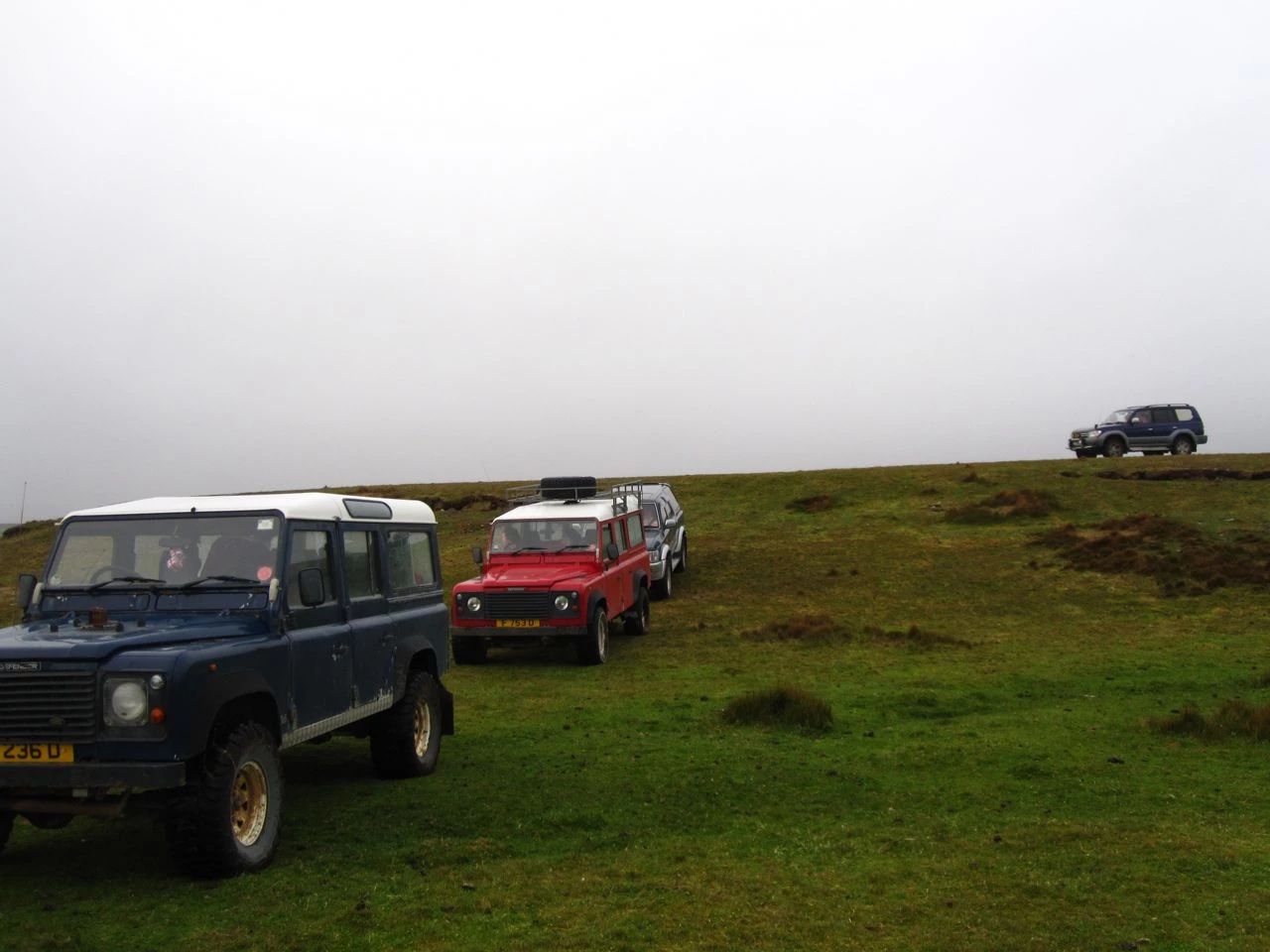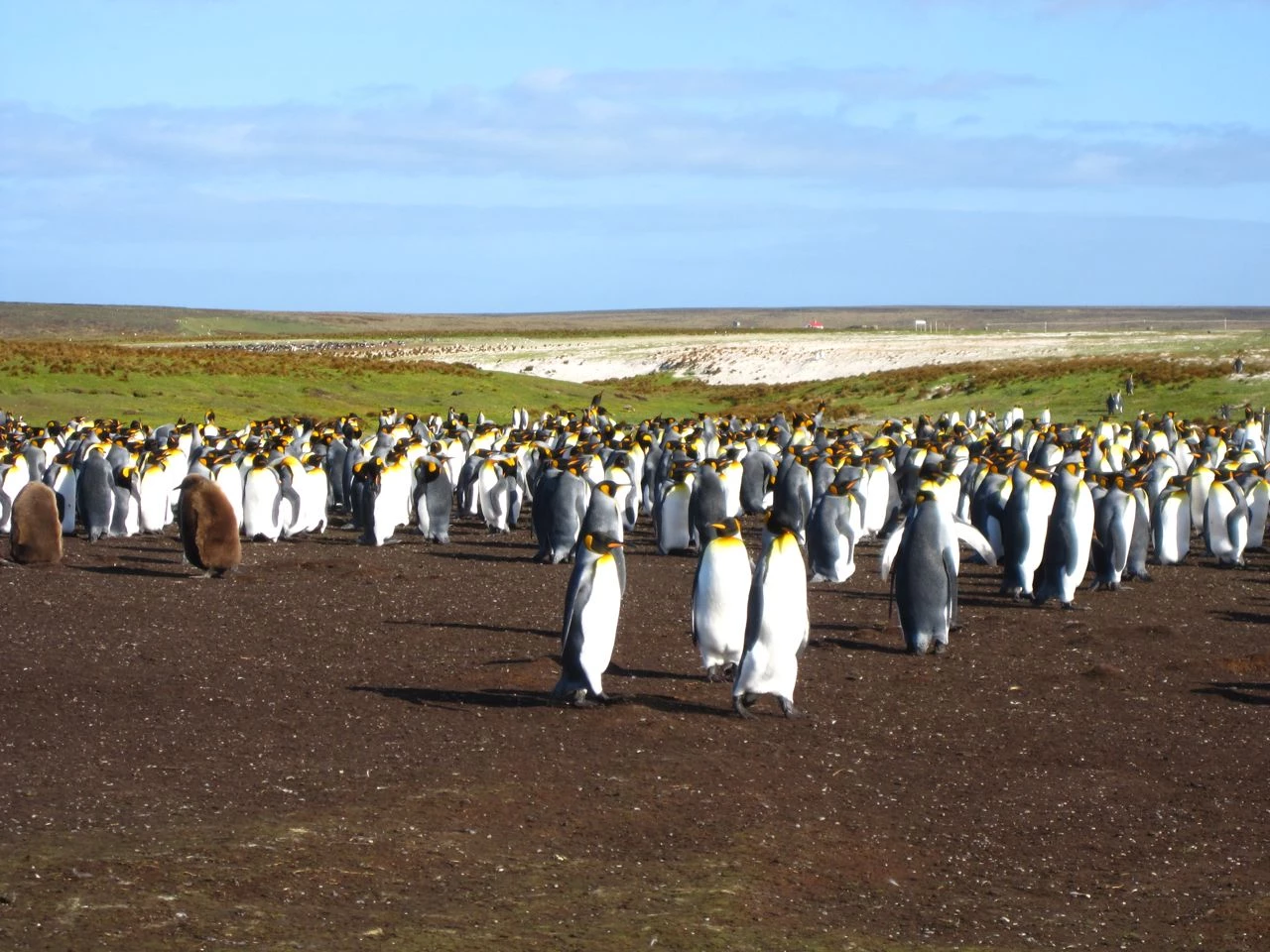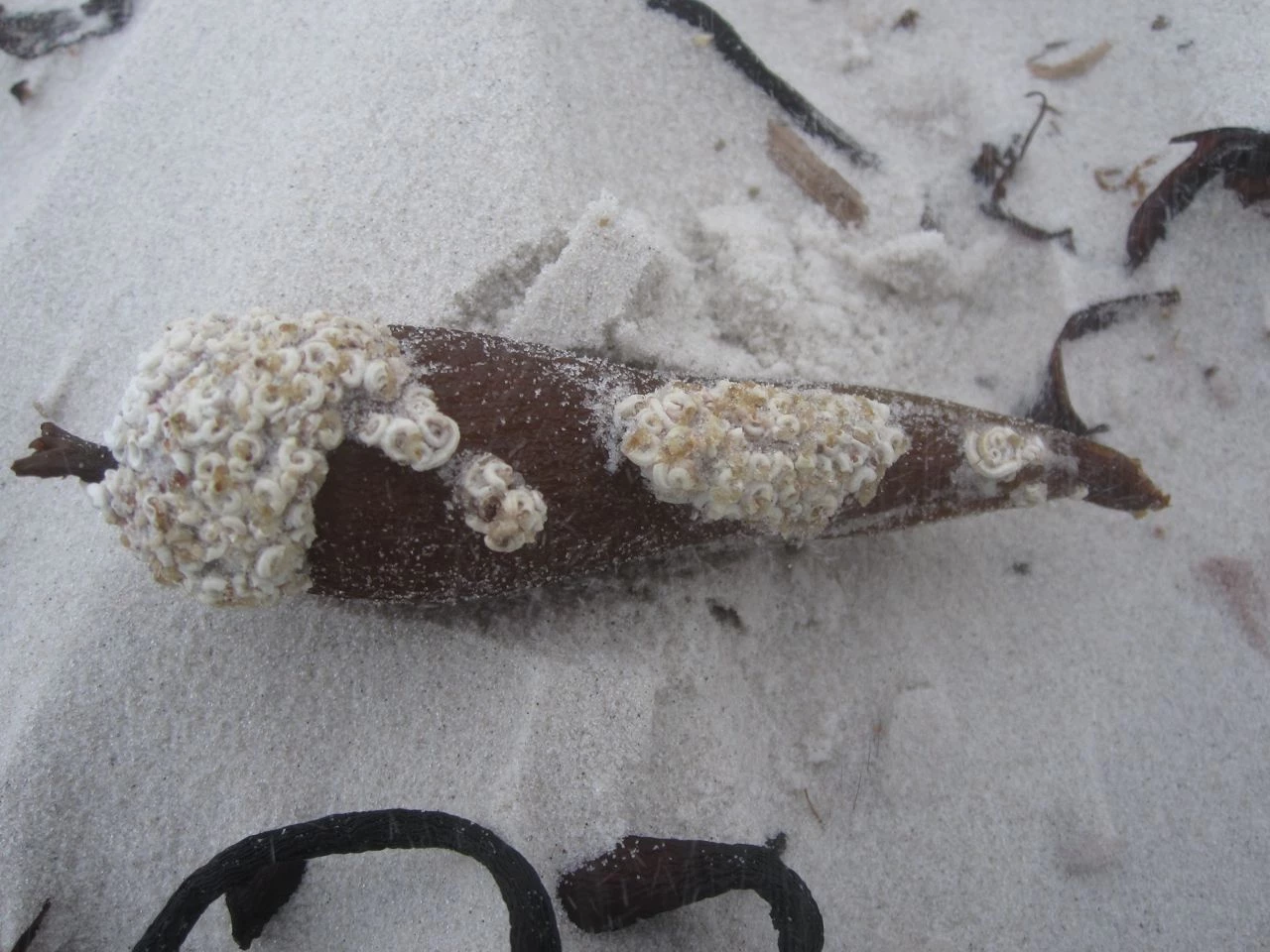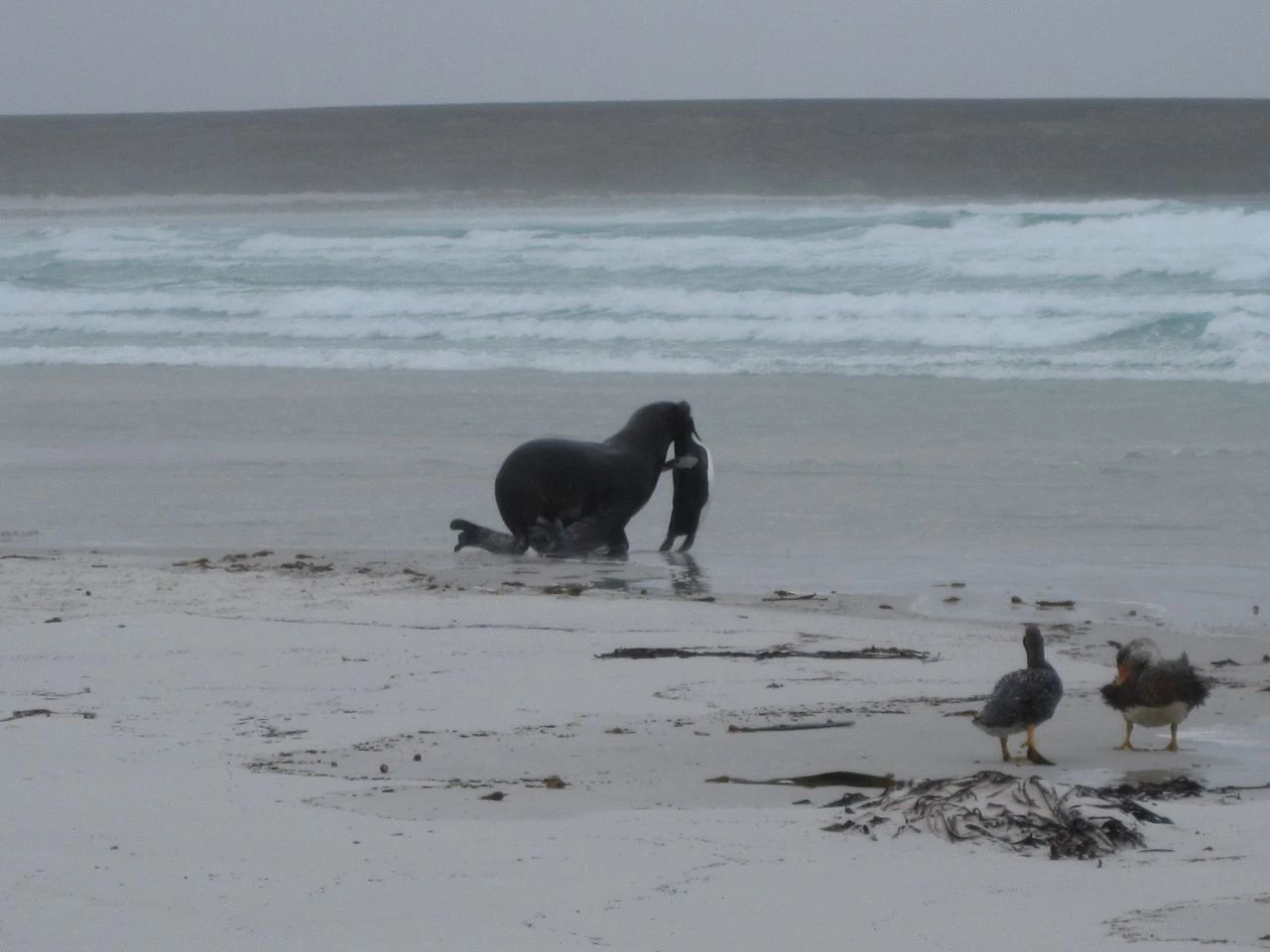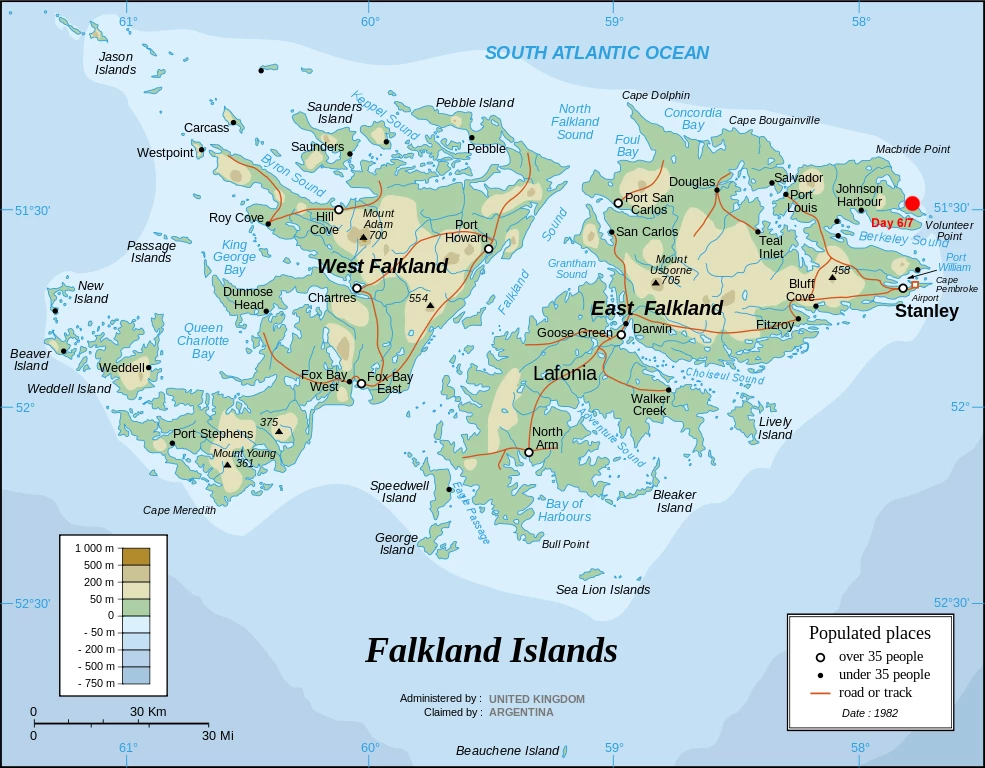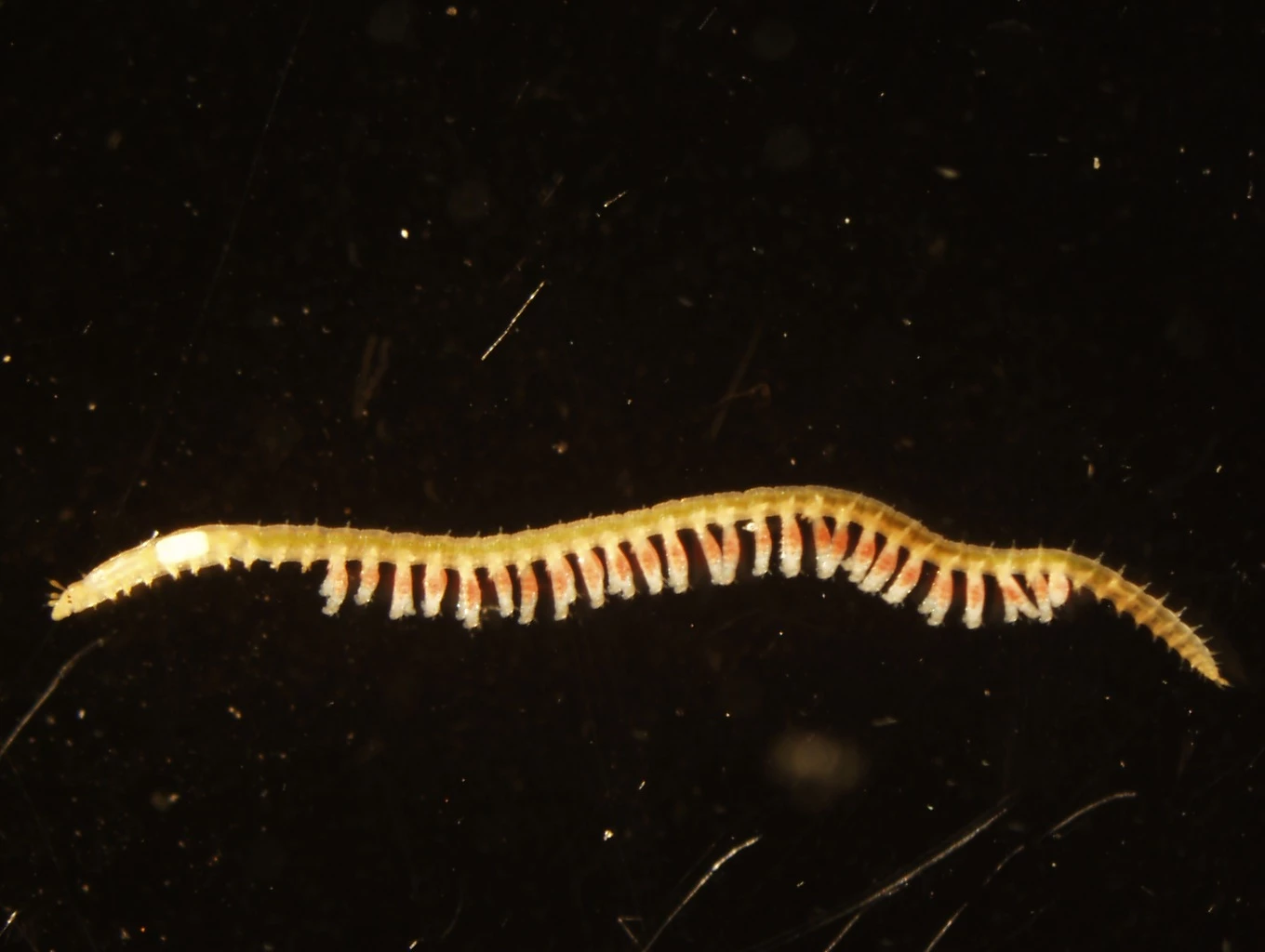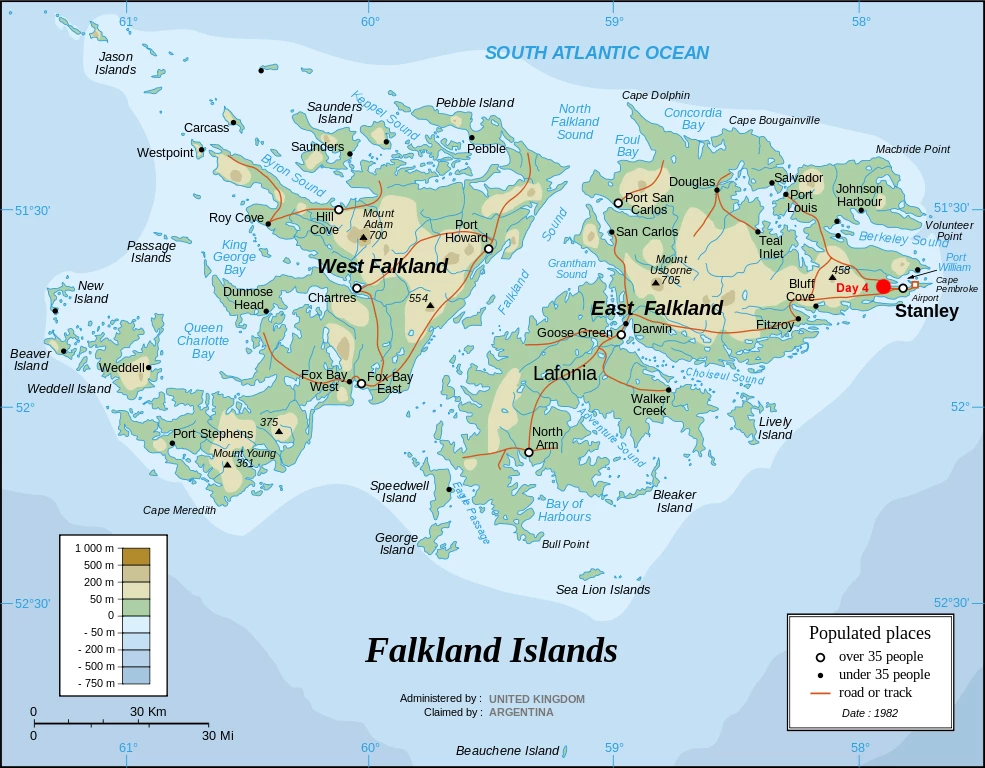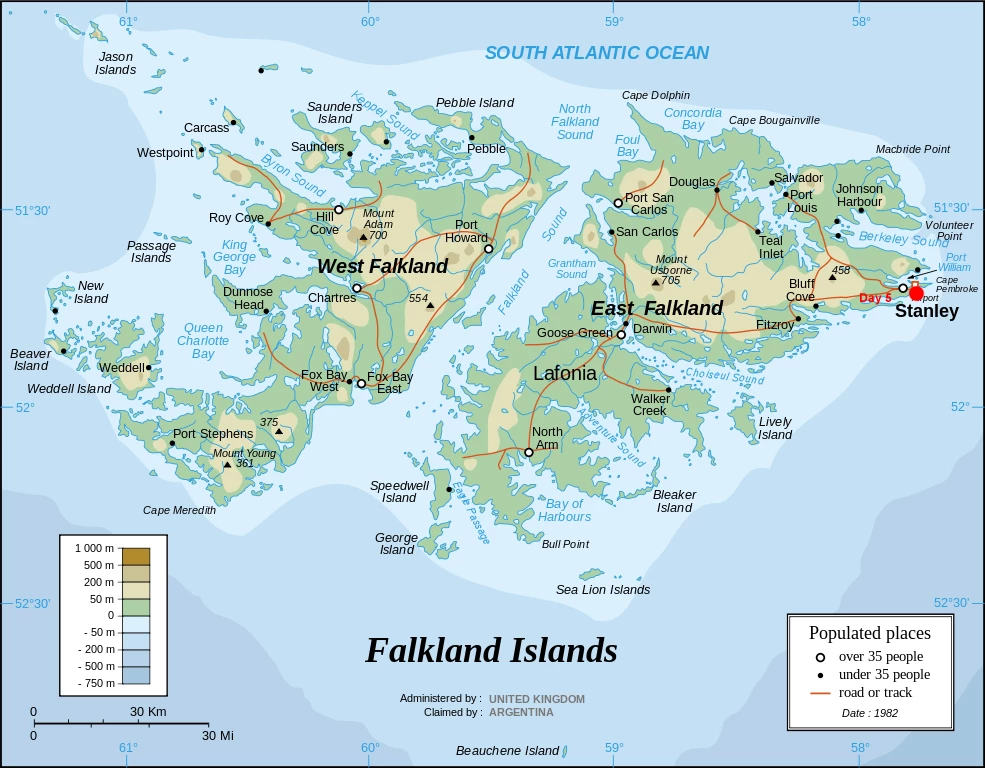Polychaete research in the Falklands by Teresa Darbyshire - Day 9
, 23 Tachwedd 2011
The rain passed but the sun sadly didn’t return. In fact, it’s been really cold the last couple of days. Last week I only needed 2 layers to keep me warm while sampling, one of those having short sleeves. Today I had a long sleeved top, jumper, fleece and waterproof jacket and I was ok. Unfortunately that couldn’t keep my hands warm and thick gloves are no use when you’re trying to tease small worms out of mud.
My first site was a shallow inlet with a stream running into it at the top. The tide had retreated and left a windy and gradually widening watercourse to follow. After 15minutes tramping along with the going getting gradually softer I began to realise that I still couldn’t see where the sea had disappeared to (photo 1). This did not bode well and I decided not to try and find the end as it was becoming more likely I might get stuck in the mud and also that when the tide did decide to come back in it would be very fast up such a shallow area. Instead I sampled 3 different spots and then made my way back to the car and set off for the next site.
As the two sites were facing completely different directions in terms of where the sea approached them from, this meant that the times of low tide for each were actually nearly 3 hours apart allowing to sample the same tide in both places.
The second place gave me an interesting offshore back to sample that was accessible at low tide. Again, this was quite different to places I had been before and was completely packed with little tubes (photo 2) indicating a LOT of worms should be there in the tubes.
Once again my hands were completely frozen and numb by the time I finished and I was glad to stop. The feeling in my toes had also started to disappear and I tried to think warm thoughts of the week before. What happened to the sun?
Still my excursion out had been a nice change. The roads are a little disconcerting to drive on as once you leave Stanley they are all unconsolidated gravel. The maximum speed limit is 40mph for good reason and every so often the landrover wavers a little as you drive before grip reestablishes itself and I try to relax my grip on the wheel too! I also got to see the ‘granite runs’, a strange area of naturally occurring broken granite blocks (photo 3) of which the Falkland Islands has one of the largest areas in the world.
Today’s wormy photo (photo 4) is of a paraonid (still no common name I’m afraid), one of my new worms today.
Fingers crossed it might start to warm up again soon!

